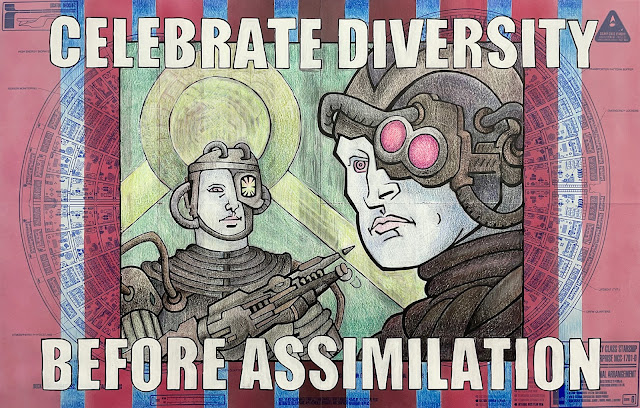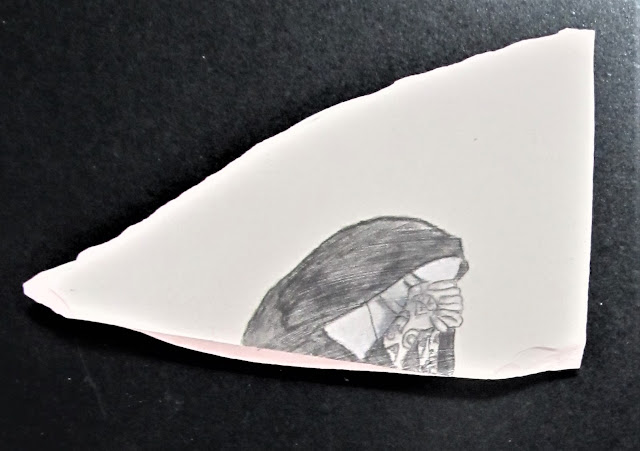Many times via this blog - the 11th highest ranked blog on the planet - I’ve discussed how the the founders and organizers of a European art fair called Art Basel (which of course, takes place in Basel, Switzerland), decided to try an American version of their successful European model and started an art fair in the Miami Beach Convention Center a couple of decades ago, and they called it Art Basel Miami Beach or ABMB for short.
And I’ve also told you how that one mega art fair spawned a few satellite art fairs in Miami at the same time and how by now there are over two dozen art fairs going on around the Greater Miami area each December, and art collectors, artists, gallerists, dealers, curators and all the symbionts of the art world descent on America’s coolest hot city in December and art rules the area.
I’ve also pointed out that if you are a visual artist in 2022 and are not aware of these events, and are not trying to get there (get your artwork there is what I mean), then something really big is missing from your artistic arsenal (unless you’re happy just painting or drawing or photographing or sculpting, etc. and could care less who sees and possibly acquires your work – if that’s the case, then skip the rest of this column and more power to you!).
But, if like some of us, the commodification of your artwork doesn’t bother you, and the fact that when you or your gallery sell one of your pieces, you feel honored and pleased that someone laid out their hard earned cash to simply add one of your creations to their home or collection, then Miami in December should be in your radar.
But how to get there? The fairs are mostly gallery-based – that means that galleries are invited or juried to exhibit; not usually individual artists --- more on that later – but there are some other ways to begin to crack the Miami art fair presence, and today I want to share some of my ideas.
Let’s start with gallery-based artists.
If you are already represented by a gallery, why not discuss Miami with them? The enormous expenses associated with the art fair scene are the main reason that most art galleries do not consider them. And this is a darn good reason, as most galleries are run by the skin of their teeth and the expense associated with doing an art fair are enormous and could wreck an entire financial plan in less than a week.
But, what does it hurt to bring it up to your gallerist? Who knows where that may lead?
I am still shocked at how many art dealers are not even aware of the potential financial and exposure rewards of doing an art fair.
Let me be clear: I don't want to hype this issue as a surefire path to moving artwork. But, this much I know… for roughly the same amount of money that a gallery spends on a full page ad in a national art magazine, you can get a small booth in some of the satellite fairs and the return on their investment has a lot more avenues than taking a chance with an ad.
Gathering information is the key thing… bring the subject up to your dealer, and if they want more info, have them email me… the best thing for art is more art.
How about if you are a cooperative gallery? Why not consider applying to one of the art fairs and spreading the cost of the booth amongst the exhibiting artists? A word of warning: the better fairs are juried and that means that someone gets always rejected. But the same key that allows cooperatives to survive for decades (spread the expenses) should and must be the key to give them a presence at the art fairs!
And many, many co-ops are routinely showing now at art fairs in Miami, NYC, LA, London, Madrid, etc. The fact that they are returning to the fairs means that they’re having a positive experience there.
The look and feel of the fairs is different as well. Many of them are booth fairs – that means that a white cube booth of plain white walls, ready to be drilled and hung with art, is the main model.
Fairs such as the original Art Basel Miami Beach, Volta, Scope, Art Miami, Untitled, etc. are on this model. There are also hotel fairs. These are fairs that essentially take place in a local hotel, where the room is often emptied out and turned into a temporary gallery by the out of town galleries. The best hotel art fair in the world, according to many, is the Aqua Art Fair, held at the Aqua Hotel in Miami Beach, and having participated in it many times in the past, add my name to the list of people who thinks that this is the best hotel art fair on the planet. And at Aqua I’ve seen cooperative galleries, and universities, and artists’ leagues, etc.
A little Googlin’ of Miami art fairs (or just art fairs in general) will reveal just how many fairs there are and where.
The key thought to leave you with: think art fairs and think Miami, New York, LA, Chicago... and think of a way to get there.



.JPG)


